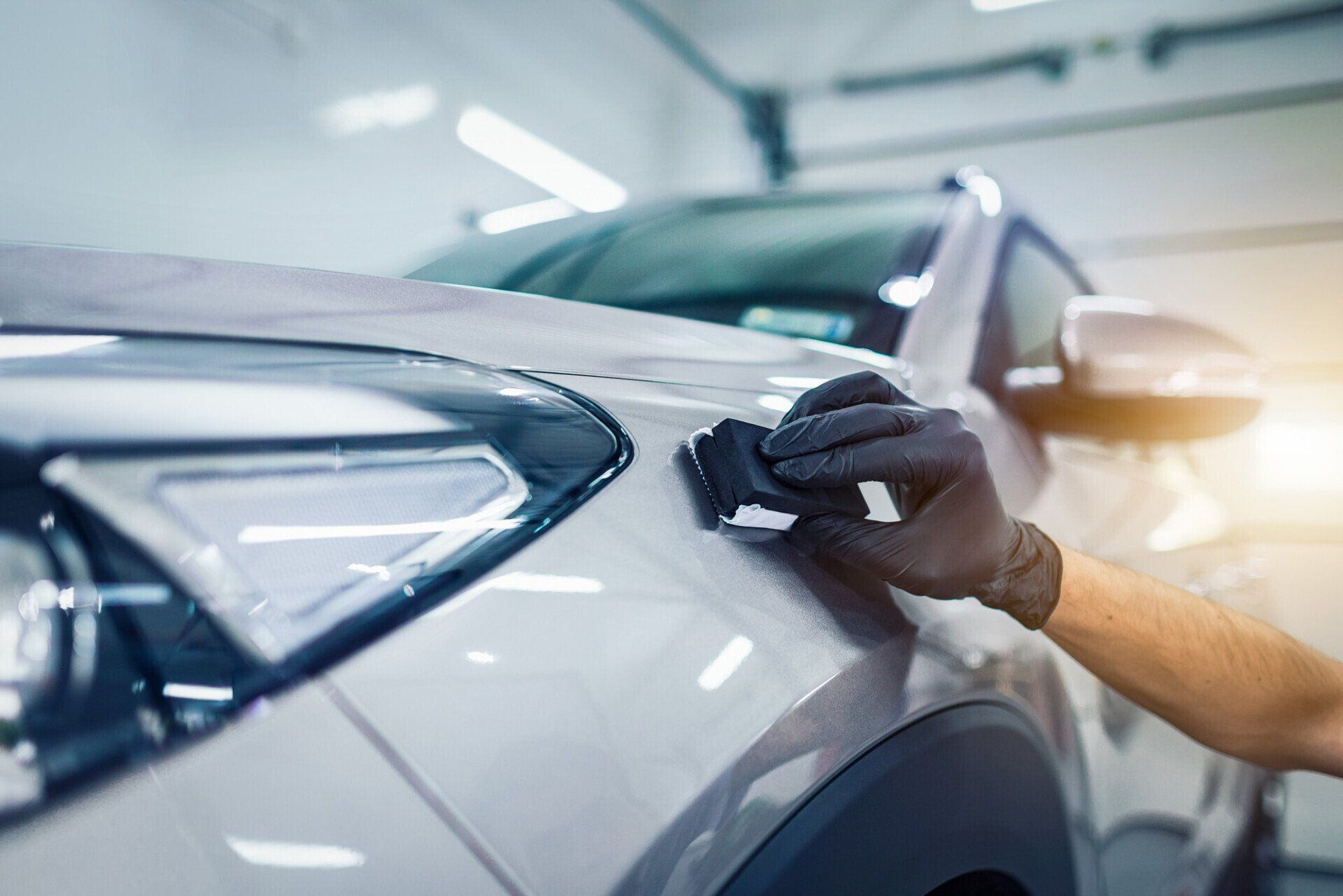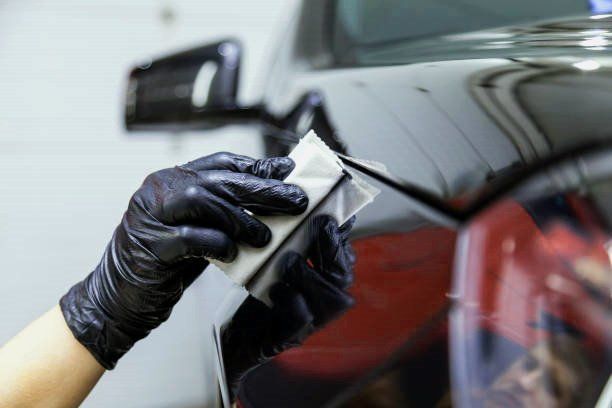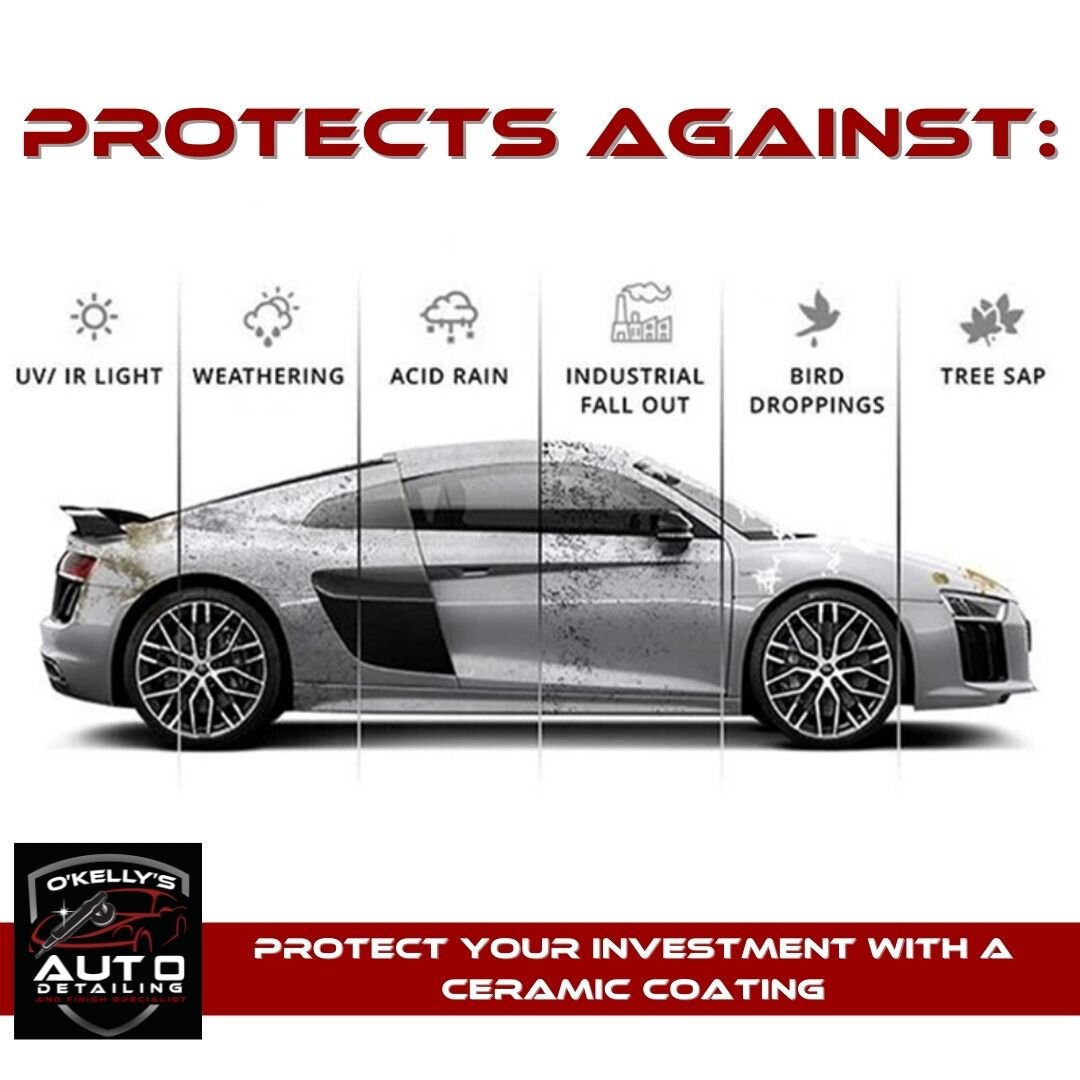The Duty of Ceramic Finishing in Shielding Your Auto's Paint From Environmental Damage
Ceramic finish has actually become an advanced remedy for auto owners looking for to preserve the integrity of their automobile's exterior. By developing a robust chemical bond with the paint, this sophisticated technology offers an awesome barrier versus numerous environmental risks, such as UV rays, acid rain, and impurities. Recognizing the comprehensive advantages and the intricacies of the application process is vital for maximizing its efficiency. As we explore the subtleties of ceramic layer, it comes to be evident that the selection to implement this safety procedure can significantly affect your automobile's long life and visual.
What Is Ceramic Layer?
Ceramic finishing is an advanced fluid polymer put on the outside surface areas of a vehicle, made to provide a resilient layer of defense for the paint. This ingenious service forms a chemical bond with the automobile's manufacturing facility paint, creating a resilient and hydrophobic guard. The layer contains nanoparticles that complete the microscopic imperfections in the paint, causing a smooth surface area that boosts radiate and gloss.
Typically, ceramic coatings are available in numerous solutions, permitting different degrees of security and durability. While some items can last for numerous months, others supply defense for several years, depending on the density of the application and ecological elements. The application procedure calls for precise prep work, including washing, decontaminating, and brightening the car's surface to guarantee ideal attachment of the covering.

Benefits of Ceramic Coating
One of the main benefits of applying a ceramic finishing is the outstanding defense it provides to automotive paint. This sophisticated coating forms a resilient layer that guards the automobile's surface area from a variety of environmental threats, consisting of UV rays, acid rain, bird droppings, and tree sap. By providing this robust protection, ceramic finishes substantially minimize the risk of fading and etching, preserving the vehicle's aesthetic charm in time.
Along with defense, ceramic coatings are renowned for their hydrophobic residential or commercial properties, which push back water and dust, making it much easier to preserve a clean car. This self-cleaning impact lowers the frequency of washing, saving both time and sources. Ceramic layers enhance the depth of the paint's gloss, resulting in a dynamic and refined appearance that raises the total appearance of the lorry.
Another significant benefit is the durability of ceramic coatings. Unlike conventional waxes or sealants that call for frequent reapplication, ceramic finishings can last a number of years, using an economical option for cars and truck owners seeking lasting security. Generally, spending in ceramic layer brings about enhanced toughness, minimized maintenance, and sustained visual allure for automobile paint.
How Ceramic Finish Functions
A ceramic finish runs through a chemical bonding procedure that creates a safety layer on the lorry's paint surface. This ingenious service uses advanced nanotechnology, where tiny particles of silica are suspended in a fluid form - ceramic coating. Upon application, these bits bond with the factory paint, creating a long lasting and hydrophobic layer that improves the automobile's surface area
The major part of ceramic pop over to this site coverings, silicon dioxide (SiO2), adds to the finish's stamina and strength. When healed, the finishing transforms into a tough, glass-like coating that guards the paint from environmental pollutants such as dust, UV rays, bird droppings, and tree sap. This molecular bond results in a surface that is not just resistant to scrapes but additionally less complicated to clean, as dust and crud are less most likely to adhere.
Additionally, the hydrophobic look at this site buildings of ceramic finishings cause water to bead and slide off, minimizing the opportunities of water areas and mineral down payments. This protective obstacle efficiently prolongs the life of the paint and maintains the vehicle's aesthetic allure, providing car proprietors a resilient option for paint security.
Application Process of Ceramic Finishing
When considering the application of ceramic finish, prep work is crucial to attaining optimal outcomes. Any scrapes or flaws should be resolved at this stage, as the finishing will bond with the surface area beneath.

Ceramic layer is then used in small areas, commonly making use of an applicator pad. The lorry needs to be left to cure in a controlled atmosphere to enable the layer to fully bond with the paint.
Long-Term Maintenance and Treatment
Achieving an effective ceramic finish application sets the structure for long-term security, yet correct upkeep is essential to preserving its advantages. Routine washing is essential; making use of a pH-neutral automobile shampoo will certainly aid keep the finishing's stability without creating damage. Avoid automated auto washes that use abrasive products, as they can compromise the coating's surface area.

Moreover, applying a ceramic layer maintenance spray can boost the existing layer, supplying an added increase in defense and shine. It's suggested to perform this every three to 6 months, relying on environmental direct exposure.
Lastly, vehicle parking in shaded areas or making use of cars and truck covers can protect against extended exposure to hazardous UV rays and environmental impurities, even more extending the life of your ceramic covering. By adhering to these upkeep methods, you can ensure your lorry's coating remains protected and visually appealing for several years to find.
Final Thought
In recap, ceramic finishing serves as a crucial protective action for automotive paint, properly protecting automobiles from a series of ecological threats. Its capacity to create a durable hydrophobic barrier not only enhances aesthetic allure but likewise considerably decreases the regularity and strength of upkeep required. The lasting nature of this sophisticated polymer emphasizes its worth in protecting lorry honesty and appearance, ultimately adding to a more resilient and visually enticing automotive surface.
Ceramic finishing is a sophisticated fluid polymer applied to the exterior surfaces of a lorry, created to supply a sturdy layer of security for the paint. Ceramic layers improve the deepness of the paint's gloss, resulting in a vivid and polished appearance that boosts the total look of the car.
A ceramic finishing runs via a chemical bonding process that creates a safety layer on the lorry's paint surface.The major part of ceramic coverings, silicon dioxide (SiO2), adds to the finish's toughness and durability.In summary, ceramic finish offers as a crucial protective step for auto paint, effectively protecting automobiles from a range of ecological hazards.